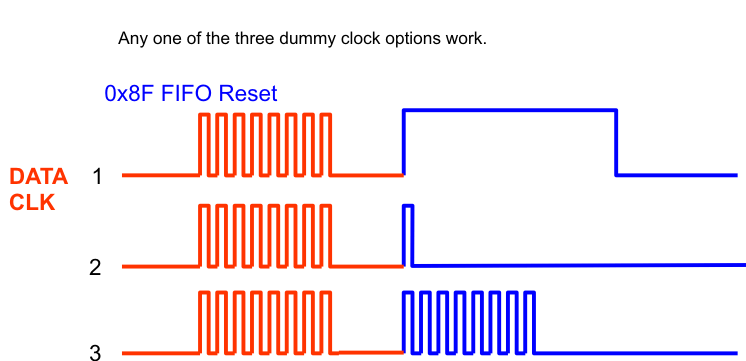SLOA140B April 2009 – November 2018 TRF7960 , TRF7960A , TRF7961 , TRF7962A , TRF7963A
1.3 Direct Command Processing
Table 2 lists the direct commands supported by the TRF7960 and TRF7961.
Table 2. Command Codes
Table 3 lists the direct commands that need the software fix when using SPI with SS* mode. These are the direct commands that are executed stand-alone (direct commands with just one byte).
Table 3. Direct Commands
| Direct Command | Command Code | Need Dummy Clock |
|---|---|---|
| Idle | 0x03 | Yes |
| Software initialization | 0x00 | Yes |
| Reset FIFO | 0x0F | Yes |
| Transmit next time slot | 0x14 | Yes |
| Block receiver | 0x16 | Yes |
| Enable receiver | 0x17 | Yes |
| Test internal RF | 0x18 | Yes |
| Test external RF | 0x19 | Yes |
| Transmit without CRC | 0x10 | No |
| Transmit with CRC | 0x11 | No |
| Delayed transmit without CRC | 0x12 | No |
| Delayed transmit with CRC | 0x13 | No |
It is recommended to have this software fix written as part of a direct command function. An example of a direct command is the slot markers (EOF) for ISO 15693. This will not work in SPI mode.
This is solved by a software fix by implementing the direct command (for example transmit next slot” ) in one of two ways:
- Have an additional SCLK cycle (low/high) before SS* goes high.
- Send a dummy TX write (8 SCLK cycles) before SS* goes high.
or
This is shown in the diagram below.

The pseudo code shown below in the DirectCommand function implements a SCLK low/high/low transition.
